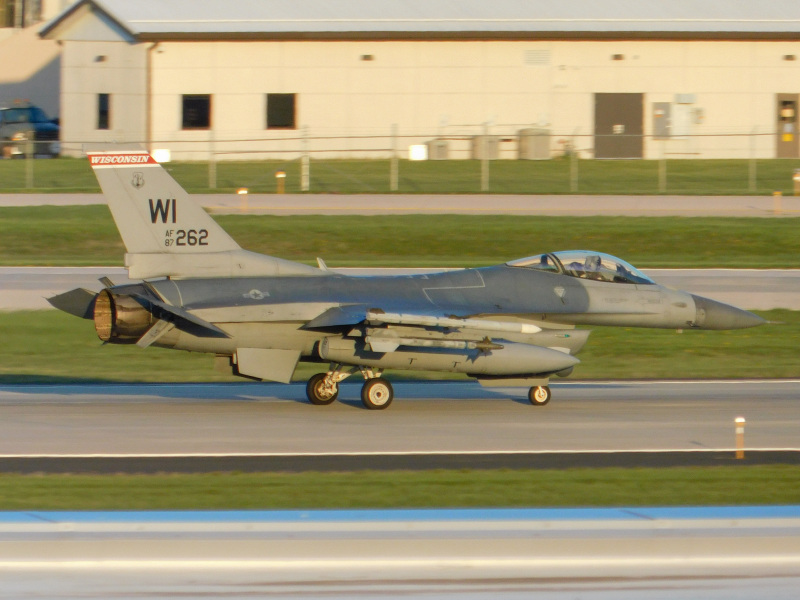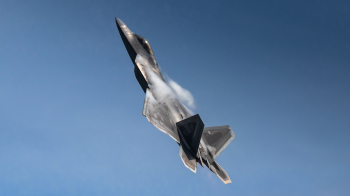As turbojet engines are effective from zero speeds, they are employed to propel aircraft from stationary to very high speeds and provide the necessary thrust for takeoff from a runway. A turbojet engine's top speed is roughly Mach 3.5 depending on the model, and thus it is not capable of operating in the hypersonic regime.
As an airplane's forward velocity exceeds Mach 1.0, the air pressure generated by the speed of the airflow through the core reduces the need for a compressor. When speeds approach Mach 3.5-4.0, a compressor is no longer required. Based on this phenomenon, the ramjet was invented and patented in 1908 by the French scientist René Lorin.

The ramjet is a jet engine without a compressor or a turbine. It is essentially a tube through which air enters purely as a result of the plane's forward motion. At the inlet, the air hits a diffuser to create high static pressure for combustion and is slowed to subsonic speeds. Fuel is supplied and the fuel-air mixture is burned. The heated gases that result are ejected at the opposite end through the exhaust nozzle. Ramjets by definition need ram air, that is to say, air that is forced into the intake as a result of the aircraft's high speed, thus they are redundant at zero speeds. Consequently, a reasonable starting point for this engine to work is at approximately Mach 3, and they can sustain effective propulsion as fast as Mach 6.
Ramjets are very helpful in applications featuring a small, focused, and straightforward mechanism for high-speed operation, such as missiles.
The acronym Scramjet stands for Supersonic Combustion Ramjet. It is distinguished from the ramjet by the fact that combustion occurs at supersonic air velocity inside the engine. This enables the scramjet to attain higher speeds than a traditional ramjet which has to reduce the incoming air to subsonic speeds before it enters the combustion chamber. Since the scramjet does not have to decelerate the air as much, the temperatures are much more tolerable for the engine parts and materials.

Scramjet engines can then operate at speeds of around Mach 6 and above. Although scientists are unsure of a scramjet's highest Mach number limit, certain experimental scramjets have flown under Mach 10 circumstances. They are perfect for hypersonic flying at flight levels much higher than turbine engines are able to withstand.
Comments (2)
 sceveds
sceveds
 Ramkumar
Can the Ramjet / Scram jet be downsized to the level to introduce High Speed / bullet trains. The likely benefits required: 1. Reduce the fossil fuel consumption. 2. High Speed transport from point to point 3. Air drop Pay loads may be by para / drones for various applications civil, Medical, Military, Space applications
Ramkumar
Can the Ramjet / Scram jet be downsized to the level to introduce High Speed / bullet trains. The likely benefits required: 1. Reduce the fossil fuel consumption. 2. High Speed transport from point to point 3. Air drop Pay loads may be by para / drones for various applications civil, Medical, Military, Space applications
Add Your Comment
SHARE
TAGS
INFORMATIONAL supersonic ramjet scramjet informational missiles jet turbojet turbineRECENTLY PUBLISHED
 Learjet Owned By Vince Neil Crashes Into Gulfstream Jet, 1 Fatality Confirmed
On February 10th, around 14:30 local time, a Learjet private jet aircraft crashed into another private jet after landing at Scottsdale Airport (SCF) in Arizona.
NEWS
READ MORE »
Learjet Owned By Vince Neil Crashes Into Gulfstream Jet, 1 Fatality Confirmed
On February 10th, around 14:30 local time, a Learjet private jet aircraft crashed into another private jet after landing at Scottsdale Airport (SCF) in Arizona.
NEWS
READ MORE »
 Seattle Plane Strike 2025: Japan Airlines and Delta Collision Raises Safety Concerns
Seattle-Tacoma International Airport saw a concerning incident on Wednesday morning when a Japan Airlines (JAL) plane clipped a parked Delta Air Lines jet while taxiing. Thankfully, no one was injured, but passengers described the collision as a frightening experience.
NEWS
READ MORE »
Seattle Plane Strike 2025: Japan Airlines and Delta Collision Raises Safety Concerns
Seattle-Tacoma International Airport saw a concerning incident on Wednesday morning when a Japan Airlines (JAL) plane clipped a parked Delta Air Lines jet while taxiing. Thankfully, no one was injured, but passengers described the collision as a frightening experience.
NEWS
READ MORE »
 Ethiopian Airlines Expands Cargo Fleet with New Boeing 777 Freighter
Ethiopian Airlines has expanded its cargo fleet with a brand-new Boeing 777 Freighter, registered as ET-BAB (MSN 68140). The aircraft was delivered directly from Boeing’s factory in Everett, Washington, USA, and landed at Addis Ababa Bole International Airport at 3:41 PM (GMT+3) on Wednesday, January 22, 2025.
NEWS
READ MORE »
Ethiopian Airlines Expands Cargo Fleet with New Boeing 777 Freighter
Ethiopian Airlines has expanded its cargo fleet with a brand-new Boeing 777 Freighter, registered as ET-BAB (MSN 68140). The aircraft was delivered directly from Boeing’s factory in Everett, Washington, USA, and landed at Addis Ababa Bole International Airport at 3:41 PM (GMT+3) on Wednesday, January 22, 2025.
NEWS
READ MORE »





